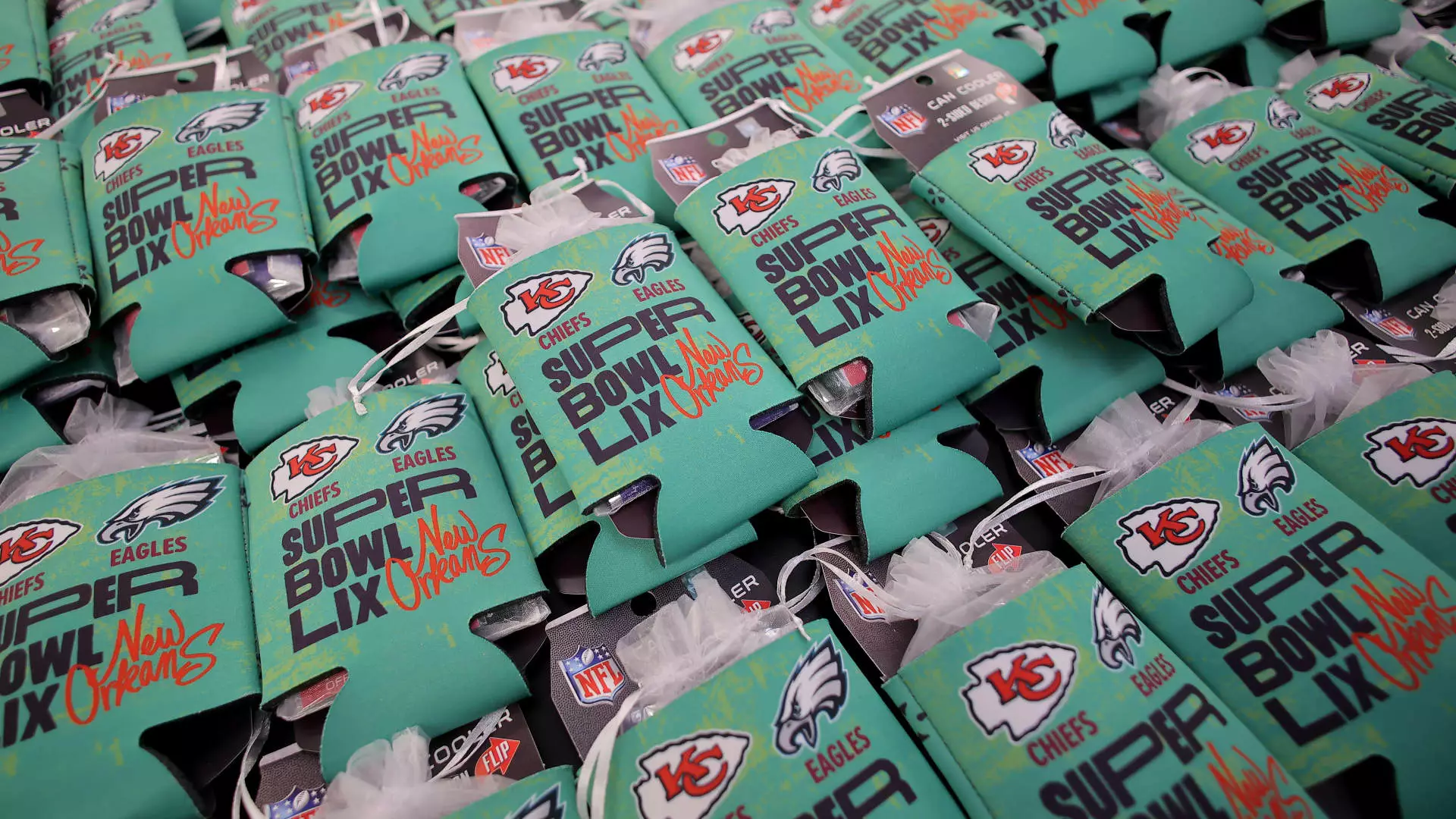The Super Bowl, one of the most anticipated events in American sports, is also a goldmine for advertisers. As they compete for the coveted attention of millions, brands are willing to spend extravagant sums to secure their placements during the game. The recent Super Bowl 59, featuring the Philadelphia Eagles and Kansas City Chiefs, encapsulates this trend, with advertisers shelling out up to $8 million for a single 30-second spot. However, this substantial investment raises questions about the evolving nature of advertising and its effectiveness in today’s diverse media landscape.
Unprecedented Audience Reach
Amy Leifer, the chief advertising sales officer at DirecTV, articulates a salient point: where else can advertisers expect to reach 100 million viewers simultaneously? The Super Bowl stands as a unique event, attracting an audience that few platforms can match. With audiences fragmented across digital channels, the significance of such a massive viewership cannot be underestimated. Super Bowl 58 last year drew over 123 million viewers, and projections suggest that Super Bowl 59 will yield approximately $550 million in ad revenue for in-game placements alone.
Despite the ongoing trend of advertisers diverting their budgets towards digital and social media, traditional television remains a dominant force in advertising effectiveness. Brands see better engagement and more substantial results when utilizing platforms with large viewership, validating the hefty price tag attached to Super Bowl commercials. This relationship illustrates the inherent value of live programming, especially sports, which has the potential to garner considerable advertising dollars.
The Landscape of Sports and Advertising
The conversation around advertising has shifted notably at the Upfronts, where media companies showcase their offerings to brands. Sports have taken center stage, as networks with live sports rights secure a larger share of advertising spending compared to those without. This dynamic is crucial, especially as the overall ad market experiences stagnation—traditional TV has suffered from a decline due to the loss of cable subscribers. However, the resilience of live sports programming continues to generate interest and investment from advertisers, suggesting a potential stabilization in the ad market.
A recent analysis from EDO indicates that the effectiveness of Super Bowl advertising is extraordinary. Brands see an average effectiveness rate three times higher than typical primetime programming, with last year’s game yielding a whopping 224% more effectiveness. This suggests that investing in a Super Bowl ad is akin to purchasing a considerable volume of ads on primetime television, amplifying the awareness and engagement for participating brands.
While the appeal of watching millions gather to experience the Super Bowl cannot be dismissed, the critical aspect of any advertising campaign centers around the execution of creative ideas. Kevin Krim, EDO’s CEO, emphasizes that the way a brand conveys its message significantly impacts the effectiveness of the advertisement. Successful campaigns during prior Super Bowls, including Kia’s EV6 launch and Popeye’s new wings, showcase how engaging storytelling can elevate brand interaction beyond the immediate viewing experience.
Moreover, localized advertising at a lower cost still has substantial impact during the event. Zeam Media, for example, noted a marked increase in app downloads following a localized ad featuring actor John Stamos. This outcome underscores that even smaller campaigns can tap into the extraordinary viewership the Super Bowl offers, providing brands of all sizes with an opportunity for heightened visibility.
The Timing and Engagement Strategies
Another critical component of ad effectiveness during the Super Bowl is timing. Marketing expert Andre Banks insists that aligning advertisements with peak audience engagement is pivotal. Specific segments of the audience may tune in for elements like the Halftime Show, such as this year’s performance by Kendrick Lamar, which allows cars to attract attention in different ways. Brands must understand these nuances to optimize their reach and ensure engagement.
Furthermore, with viewers increasingly using social media during the game, there exists a ripe opportunity for brands to stimulate second-screen engagement. The synchronization of traditional television ads with social media channels may amplify interest and interaction, creating a multi-faceted approach to advertising that resonates with modern viewers.
While the numbers illustrate that television advertising remains highly effective, some in the industry contemplate whether this narrative is sustainable in the long run. Shoshana Winter of Converge acknowledges that although traditional media may still capture a large audience, its reputation as the “most effective” advertising method may not hold true indefinitely. As tech giants continue to encroach on ad revenue, brands may find themselves increasingly drawn to digital platforms where they can foster more targeted engagements.
Ultimately, the Super Bowl remains a storied event that offers unparalleled opportunities for advertisers. However, as the media landscape continues to evolve, it is imperative for brands to adapt their strategies to navigate the shifting dynamics of audience engagement and advertising effectiveness. The ability to fuse traditional methods with innovative digital practices will likely dictate which brands succeed in leveraging the significant investment that comes with Super Bowl advertising.


Leave a Reply